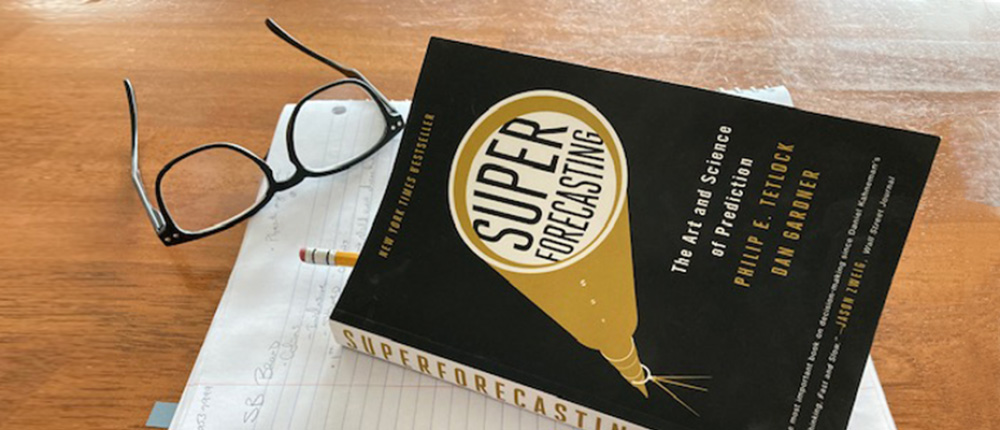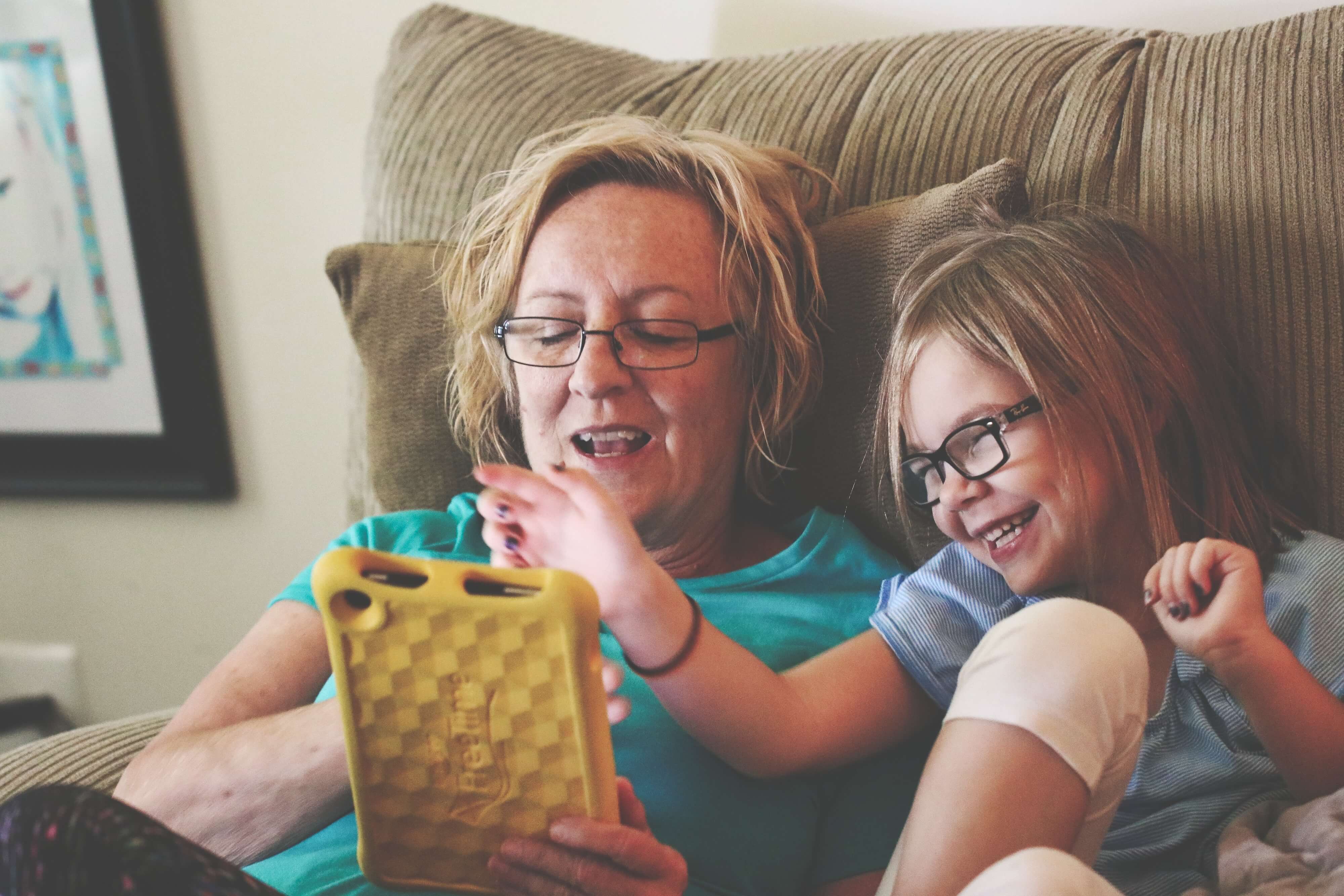Eight Top Takeaways from the book Superforecasting

As a team, all of us at the Alliance read Superforecasting, the acclaimed book co-authored by our Advisory Council Member, Phil Tetlock, and and Dan Garnder. If you don’t know the premise, it is about ordinary people challenged with trying to forecast future events. They were retirees, students, engineers, artists, and housewives. Nothing remarkable except for their willingness to try, for a $250 gift card, to outwit and outthink some of the nation’s top prognosticators. And they did. Hands down.
What did these people do that can help us all be better about predicting outcomes in our lives, and in making decisions that impact our long- and short-term wellbeing? By weaving together their stories with political and real-life examples, Phil and Dan tell us. We recommend the book as an accessible, thoughtful, and inspiring read.
We also share eight of our team’s favorite lessons, and highlight how they relate to our mission, which is ensuring that all K-12 students learn to be better decision-makers through Decision Education.
#1 “Beliefs are hypotheses to be tested, not treasures to be guarded.” (p. 127)
Phil and other experts call this Active Open Mindedness. When we approach decisions, problems, or opportunities with an active oven mind, we are predisposed to consider evidence that is contrary to our beliefs. We also give more attention to those people who disagree with us. Being open to consider another view helps us determine what is really true and not just what we believe, want to believe, or instinctively respond to.
Teaching students Active Open Mindedness is a key part of Decision Education because the more open students are to new ideas, the more they will be able to determine for themselves what is true, and thus what to do.
#2 If Intellectual Humility is critical to good decision-making, how do you explain the success of confident leaders like Winston Churchill or Steve Jobs? (p. 228)
The key, the authors write, is to be confident in what we know, and humble about that which we do not.
“The humility required for good judgment is not self-doubt…it is a recognition that reality is profoundly complex, that seeing things clearly is a constant struggle—when it can be done at all—and that the human judgment must therefore be riddled with mistakes. This is true for fools and geniuses alike.” (p. 228)
Through Decision Education, students learn the benefits of and develop the disposition for Intellectual Humility.
#3 “We know we should slow down and think before drawing firm conclusions. And yet, when we are faced with a problem, and a seemingly sensible solution springs to mind” we embrace it without further thought. (p. 41)
Phil and Dan call this “tip-of-your-nose perspective.” Someone raises a question, we look down, and there an answer springs up, generating “perceptions that are clear, compelling and (potentially) wrong.
”Daniel Kahneman calls this “system 1 thinking,” and it is strongly influenced by cognitive biases.
“Tip-of-the-nose perspective,” Tetlock writes, “insists that it sees reality objectively and correctly, so there is no need to consult other perspectives.” (p. 78)
“This modest little mistake is responsible for many of the things people believe but shouldn’t.” (p. 101)
Only when we become aware of our nose—and its propensity to direct our vision—can we open our eyes to the bigger picture.
Decision Education includes a focus on teaching students to see and avoid cognitive biases and tip-of-the-nose thinking so that they can make improved, thoughtful decisions instead of reacting quickly and impulsively.
#4 Are you a fox or a hedgehog—and who do you listen to?
In Greek poetry, “the fox knows many things, but the hedgehog knows one big thing.” (p. 69)
In life, hedgehog experts – deeply knowledgeable in a key area – are widely quoted and listened to. They know their specific areas well, speak with certainty and confidence, and typically are backed by strong credentials. But, our authors write, their focused expertise often blinds them to other influences.
The simplicity and confidence of the hedgehog impairs foresight, but it calms nerves…people tend to find uncertainty disturbing and (saying) ‘maybe’ underscores uncertainty.” (p. 72)
Foxes, on the other hand, live more in the shady gray areas. They are “eclectic experts,” seeing many sides to a decision or situation. “Foxes don’t fare so well in the media. Their stories are complex, full of ‘howevers’ and ‘on the other hand.’ This…is bad TV. But it is good forecasting. Indeed, it is essential.” (p. 72)
In addition to helping us and students think critically about how we evaluate options, this also prompts us to be more critical of information shared by others.
#5 "Foresight isn't a mysterious gift bestowed at birth. It is the product of a particular way of thinking, of gathering information, of updating beliefs. These habits of thought can be learned and cultivated by any intelligent, thoughtful, determined person." (p. 18)
Phil and Dan write about expert and dedicated forecasters who predict world outcomes, politics, war, or economic upheaval. But, also notes that forecasting is applicable in everyday life.
“When we think about changing jobs, getting married, buying a home, making an investment, launching a product, or retiring, we decide based on how we expect the future will unfold. These expectations are forecasts.” (p. 1)
Improving our ability to forecast improves our decisions, which improves our outcomes.
#6 “By breaking down the question, we can better separate the knowable and the unknowable.” (P. 111)
When a question is complex and the answer seemingly impossible based on what we know, our authors tell us to break it down. What smaller questions can we answer that might get us closer to solving the bigger question? He calls this process problem decomposition—or Fermi-izing, after the Italian-American physicist Enrico Fermi, who perfected the concept.
As a team working to ensure students learn decision-making skills, we know that this concept is a game changer. Fermi-izing gives students the agency to make even the tough decisions—by breaking them down, and considering along the way what they know, can find out, and matters most to them.
#7 Are you looking inside, outside, both, or neither?
Even the smartest problem solvers tend to look at the inside view first for answers, but the really helpful data most often lies outside. Starting with the outside view first gives us a solid basement of understanding to build on—it gives us a “base rate.”
Phil and Dan ask how likely a certain family is to have a pet. Inside viewers would focus first on the family itself—their living situation, number of children, age, etc. Outside viewers would first look for data about the percentage of US households that owns a pet. This provides a stronger starting point, or base, from which to build your prediction.“It’s natural to be drawn to the inside view.
"It’s usually concrete and filled with engaging detail we can use to craft a story about what’s going on. The outside view is typically abstract, bare, and doesn’t lend itself as readily to storytelling. Even smart, accomplished people routinely fail to consider the outside view.” (p. 118)

